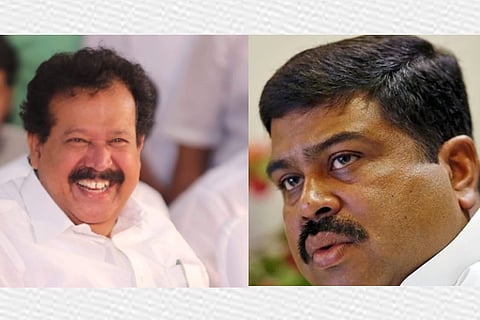

The Union Education Minister Dharmendra Pradhan wrote to Tamil Nadu Higher Education Minister Dr K Ponmudy on Sunday regarding the issue of the Common University Entrance Examination (CUET).
The letter regarding 'CUET' reads:
* As you are aware that the NEP 2020 has been finalised and issued after a detailed and highly participative consultation process with various stake holders. National Policy on Education 1968 and National Policy on Education 1986/1992 have been the guiding documents for the policies of the Central Government in the education sector. National Education Policy 2020 may be seen as continuum to earlier education policies.
* NEP, 2020 emphasizes on the regular formative assessment for leaming rather than the summative assessment that encourages today's 'Coaching' Culture. Hence, Common University Entrance Test (CUET) has been introduced in pursuance of the National Education Policy, 2020.
* Students may apply to more than one. university as per their choice with one application form thereby reducing financial burden and increasing access. They have choice to appear in the entrance examination in any of the 13 languages with a choice of selecting examination centre from over hundreds of examination centres across the country. Since, there is wide variation in the marking pattern of different state boards, CUET provides for entrance solely on the CUET marks.
* These exams shall test conceptual understanding and the ability to apply knowledge and shall aim to eliminate the need for taking coaching for these exams. Further, the syllabus for undergraduate level entrance examination is based on the understanding of subject at class XII level, irrespective of affiliations to any board like CBSE, thereby benefiting the Socio-Economically Disadvantaged Groups (SEDGs). Besides, the marks of class twelve examination has been considered for eligibility for exam. It is left up to individual universities and colleges to use NTA assessments for their admissions.
* Therefore, CUET will address the issue of access to education through single entrance examination in different languages. This will reduce the economic burden and mental harassment. Further, CUET will provide level playing field to the students of rural and remote area and those belonging to SEDGs. Also, this concept of Common Entrance examination, as envisaged in the NEP, 2020, is in continuation of the stipulations of Programme of Action 1992 on National Policy on Education (NPE), 1986.
* National Education Policies issued from time to time always recognized the role of both the Central Governments and State Governments on the matter of Education Sector in the Country. NPE, 1968 which was issued before, 42nd Constitution Amendment Act, speaks about coordinated action on part of States and Centre. NPE, 1986, which was issued after 42nd Amendment Act, in para 3.13 clearly recognizes the role and responsibility of States and UTS.
* Similarly in continuation with the earlier Policies NEP, 2020 in para 26 and 27, lays emphasis on the role of both Central and State Governments. Therefore, there is no case for infringing upon the rights of the States/UTs. After 42nd Amendment Act, the Education becoming subject matter of the Concurrent list, has enabled Central Government also to take measures for development, promotion and growth of education in the Country.
Visit news.dtnext.in to explore our interactive epaper!
Download the DT Next app for more exciting features!
Click here for iOS
Click here for Android